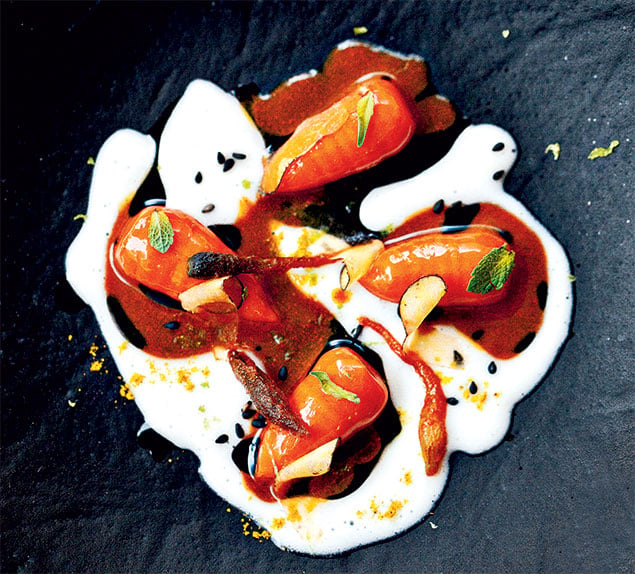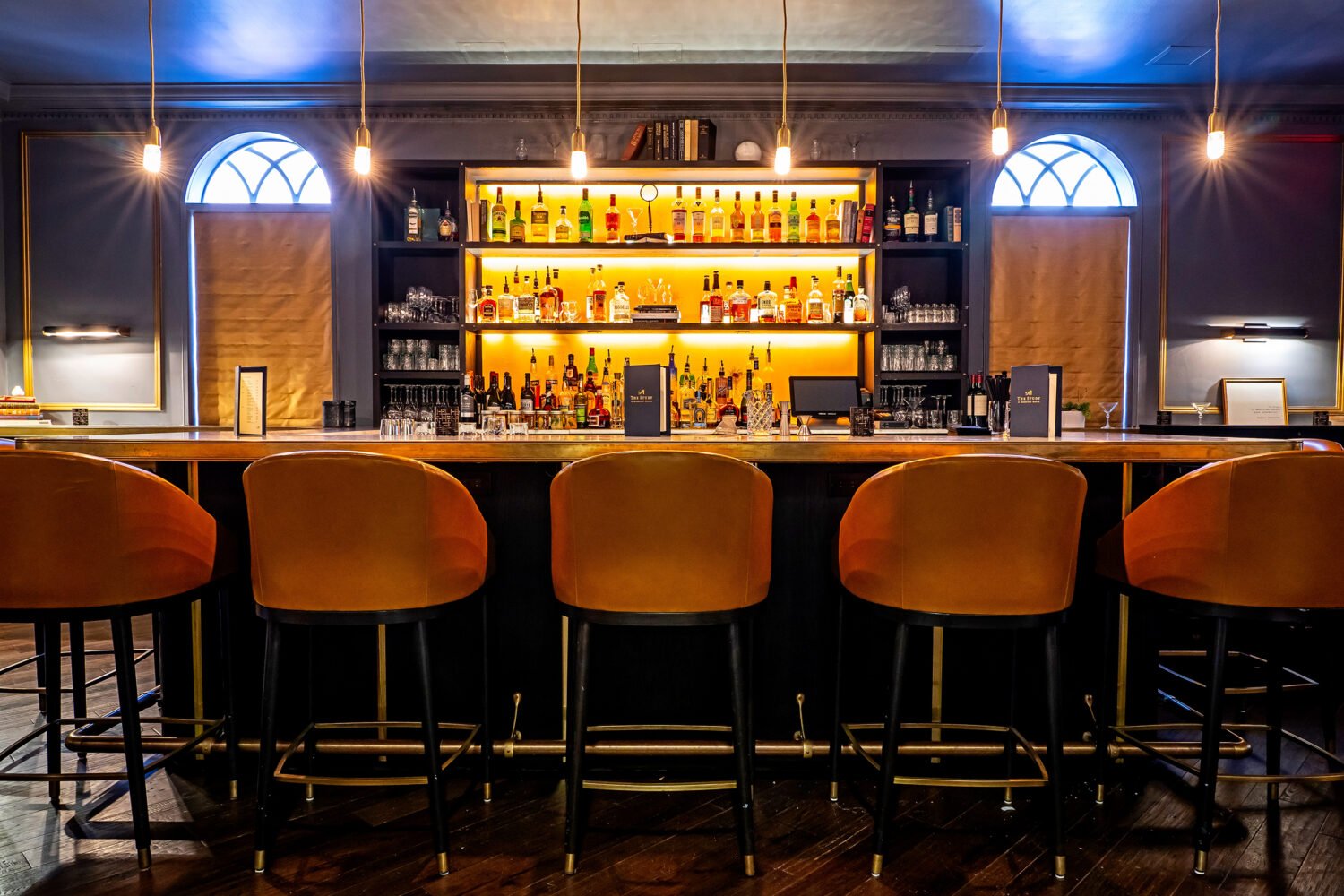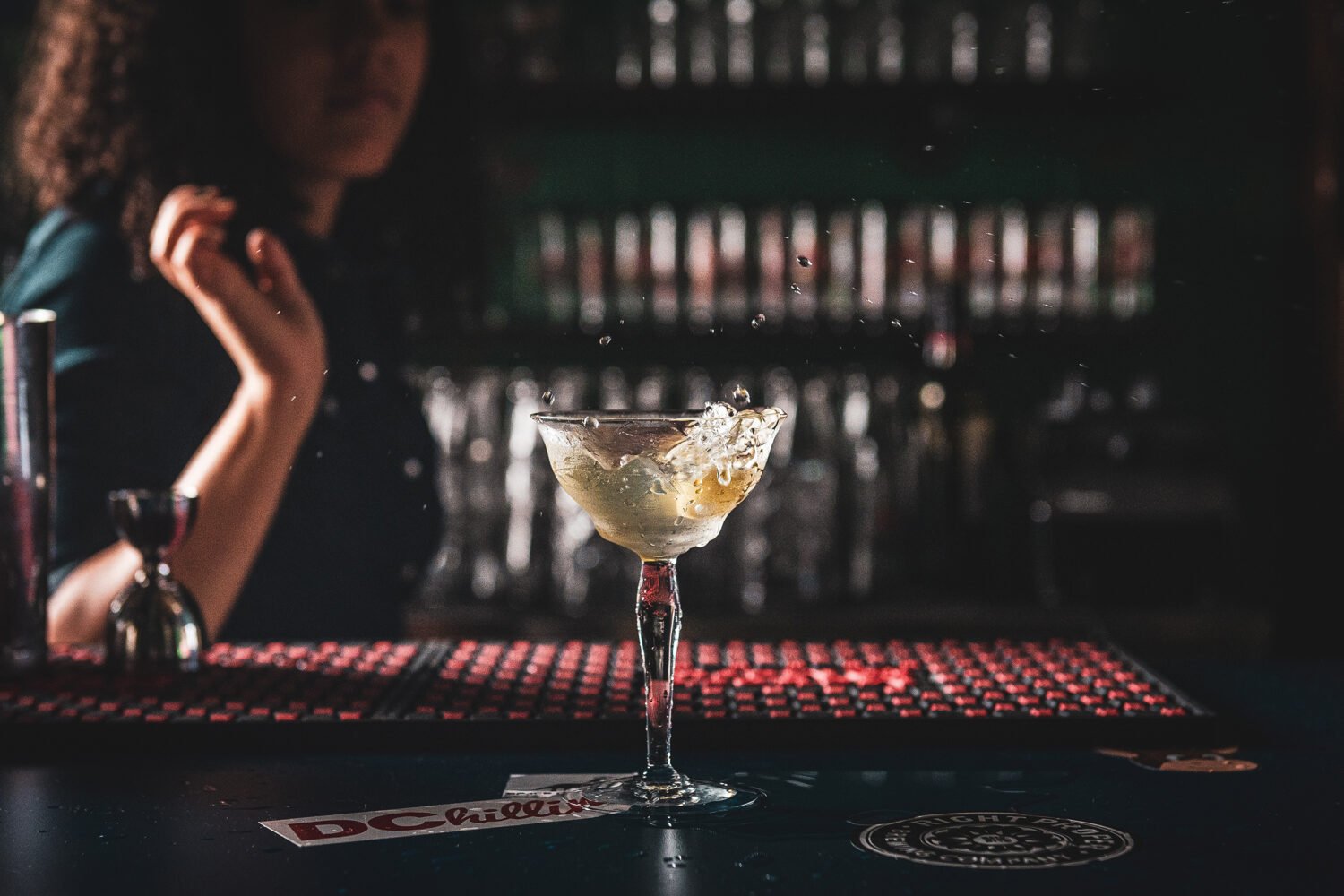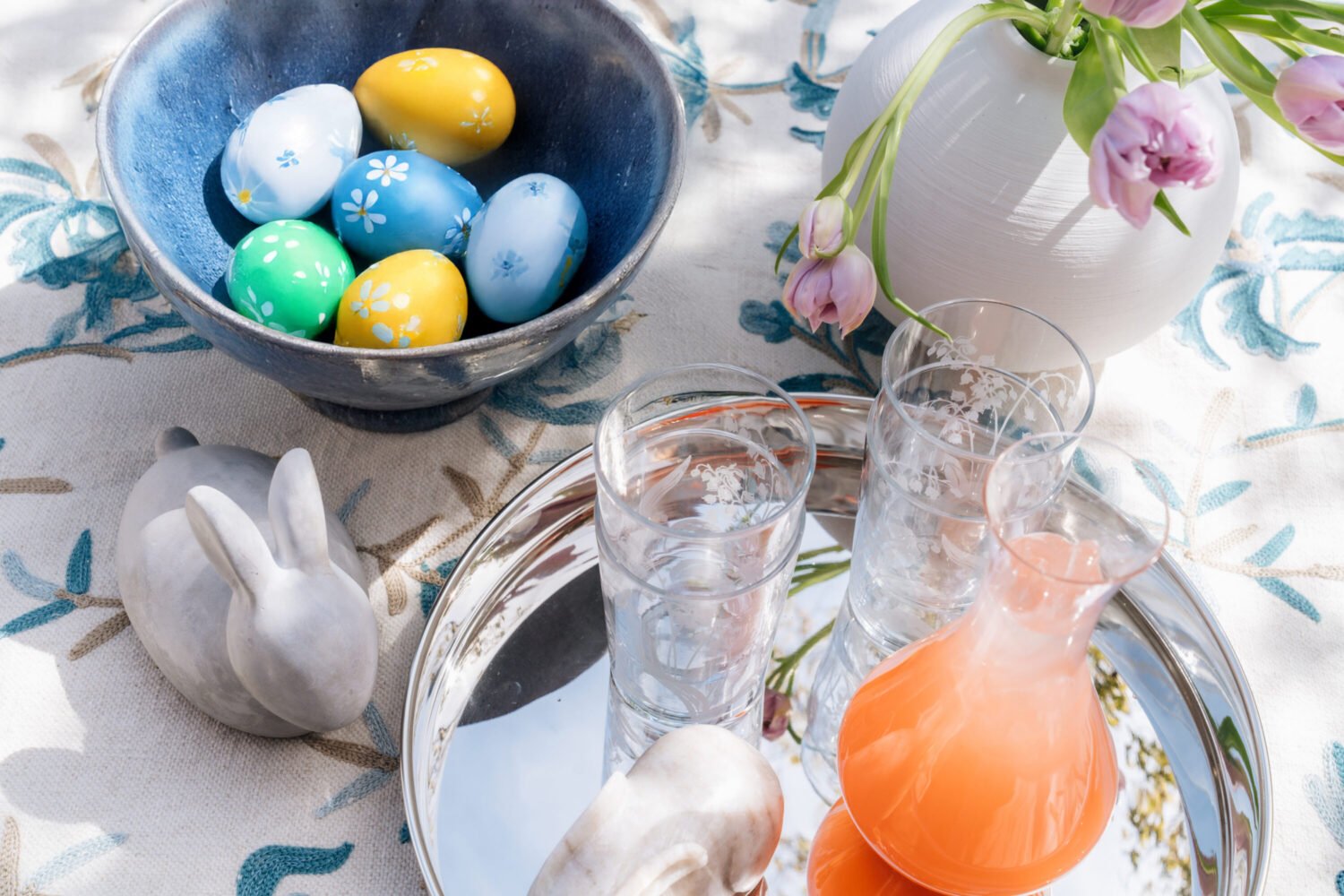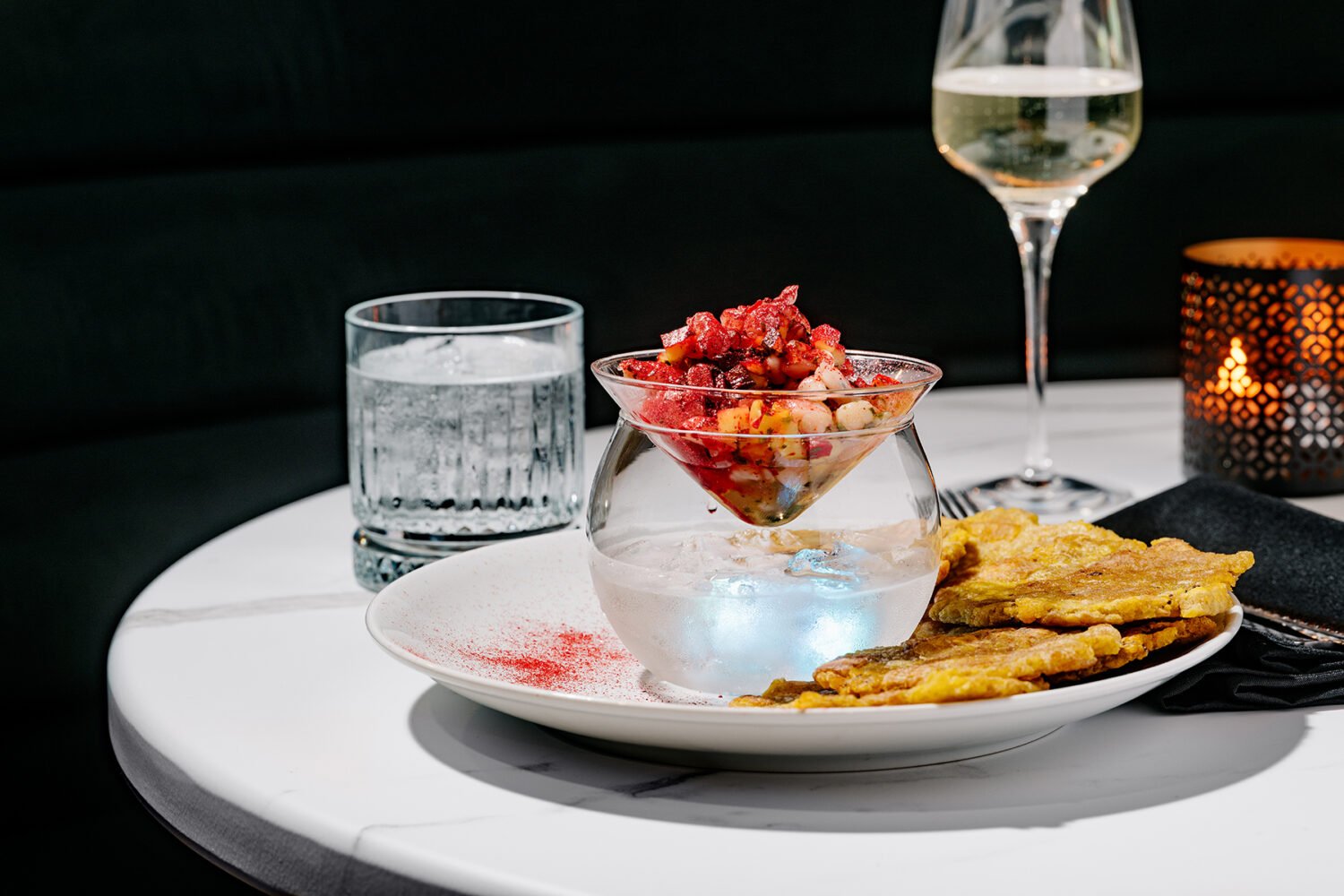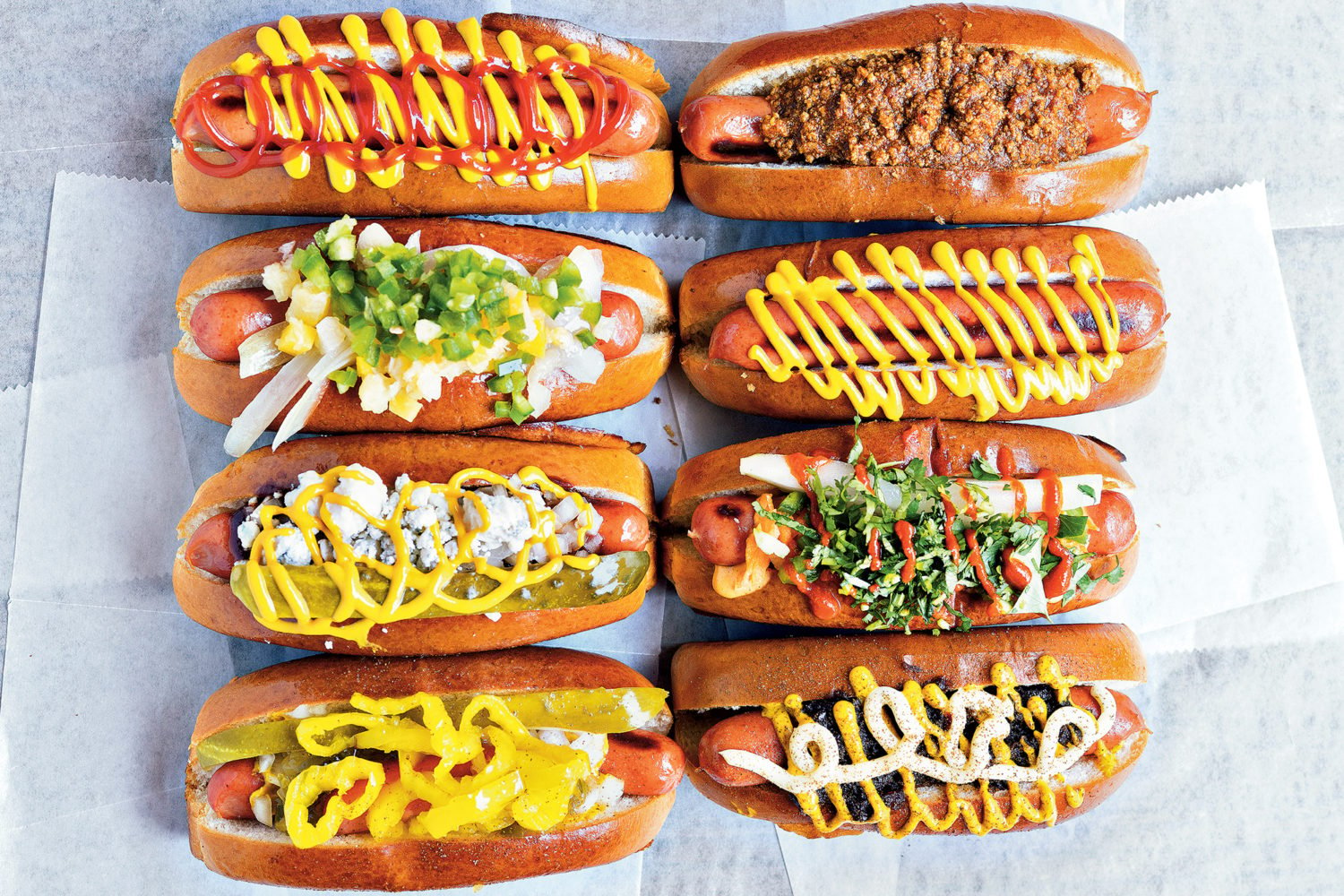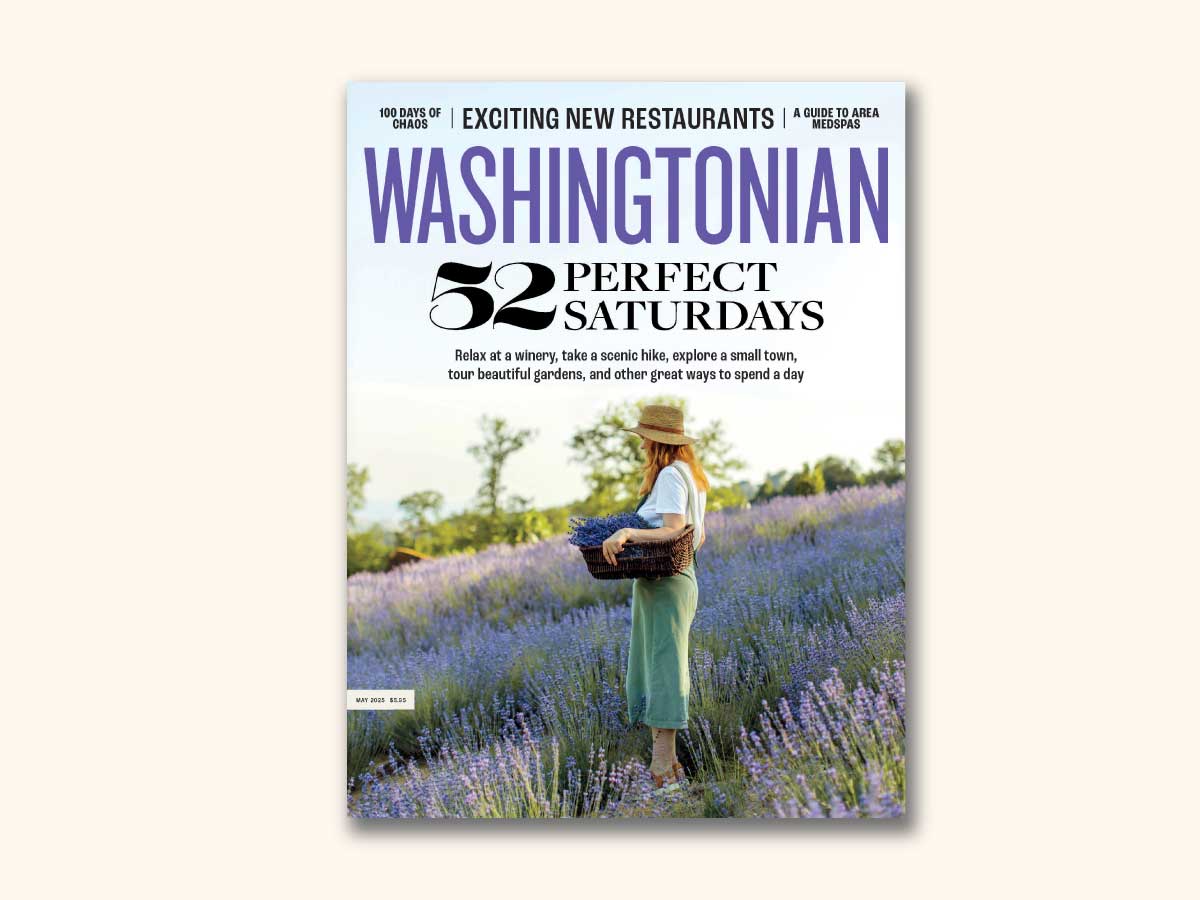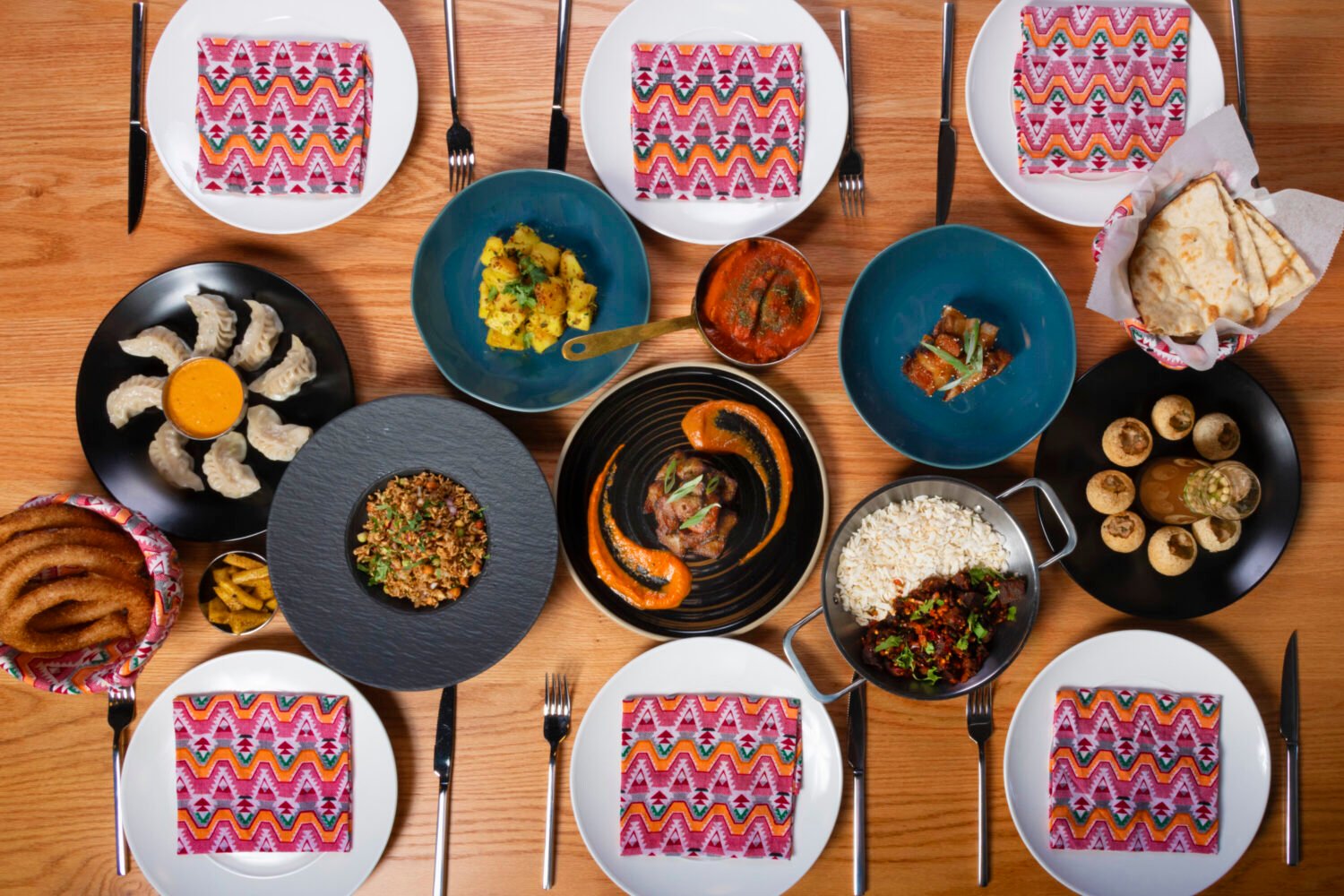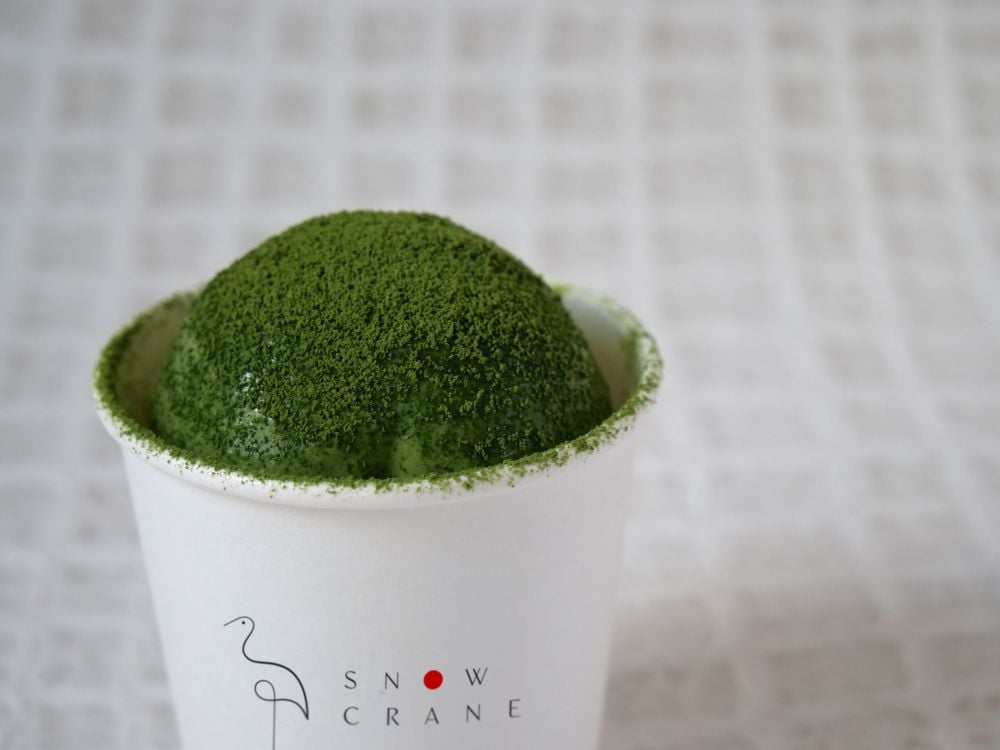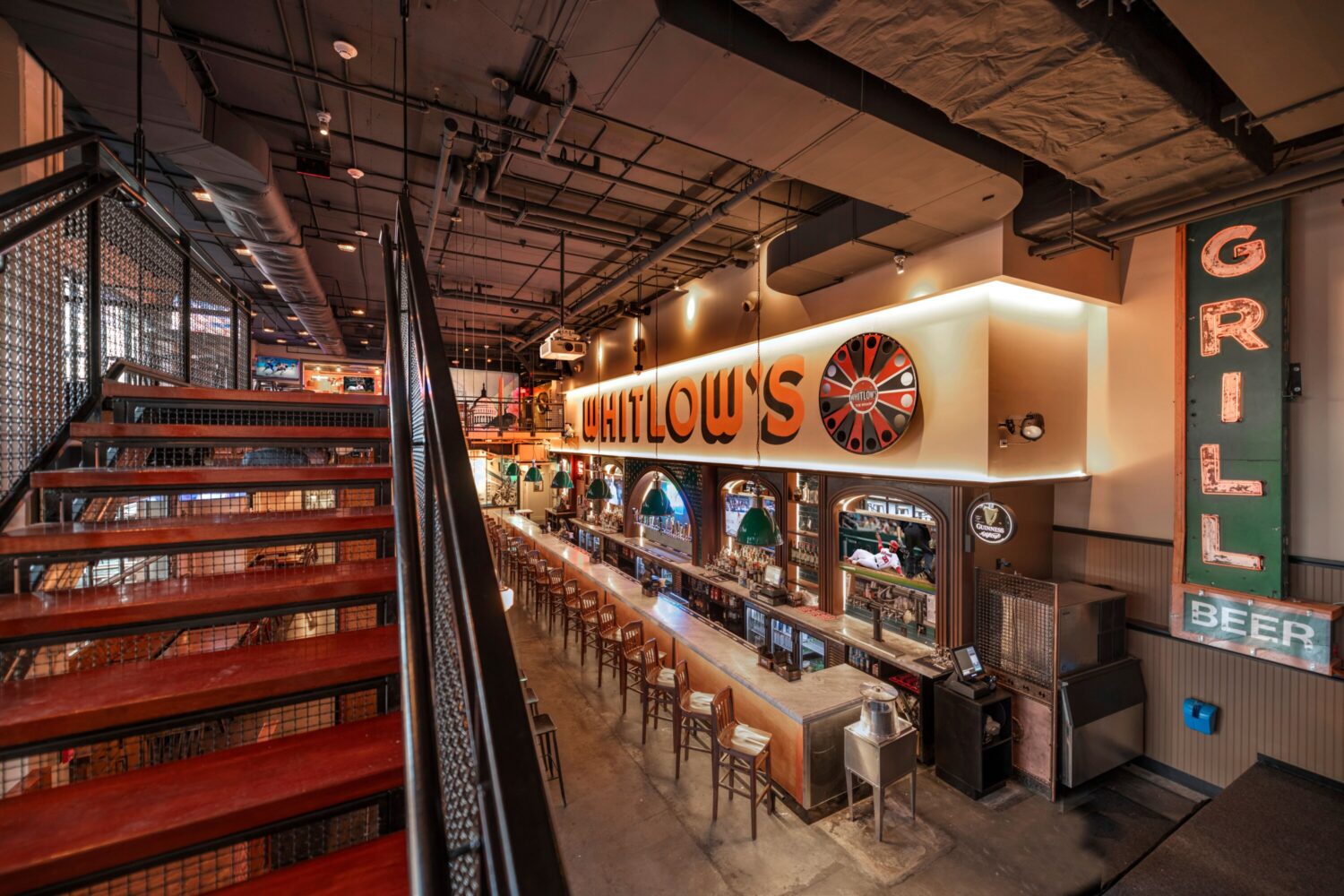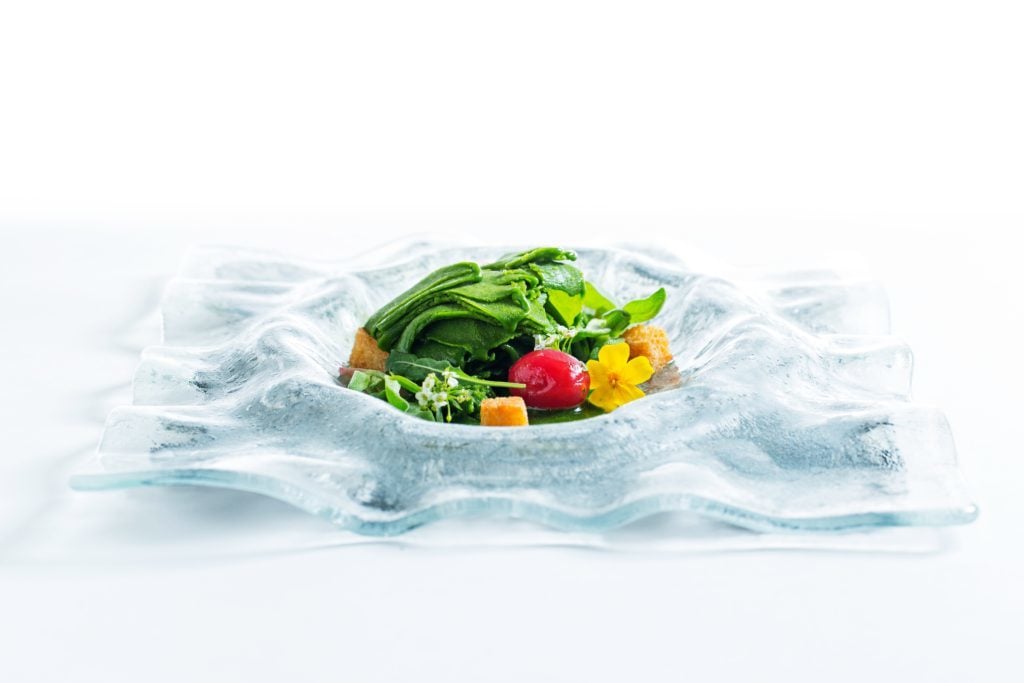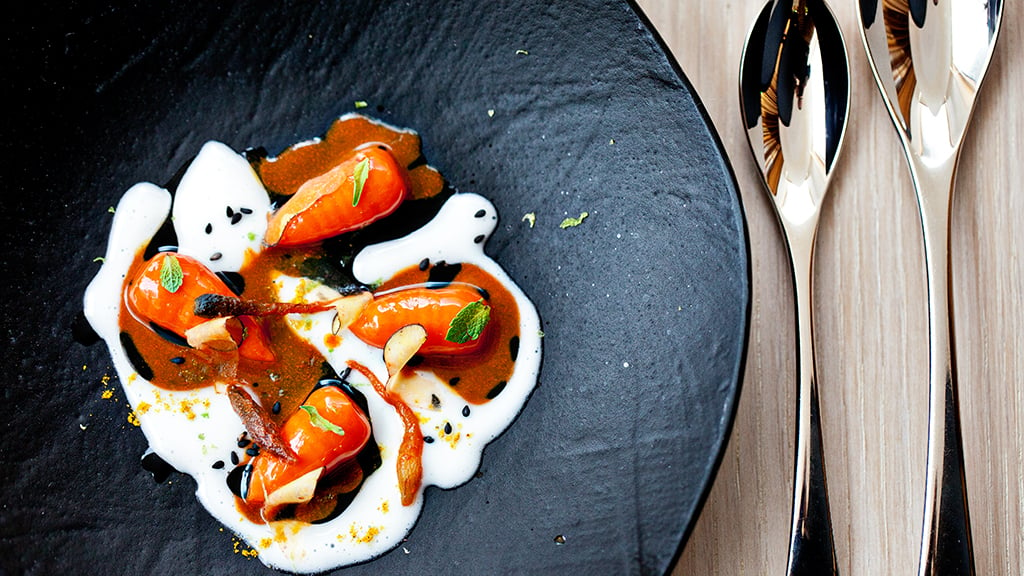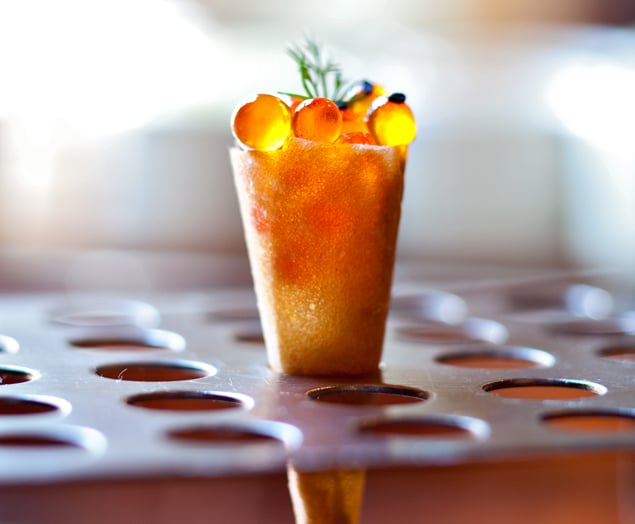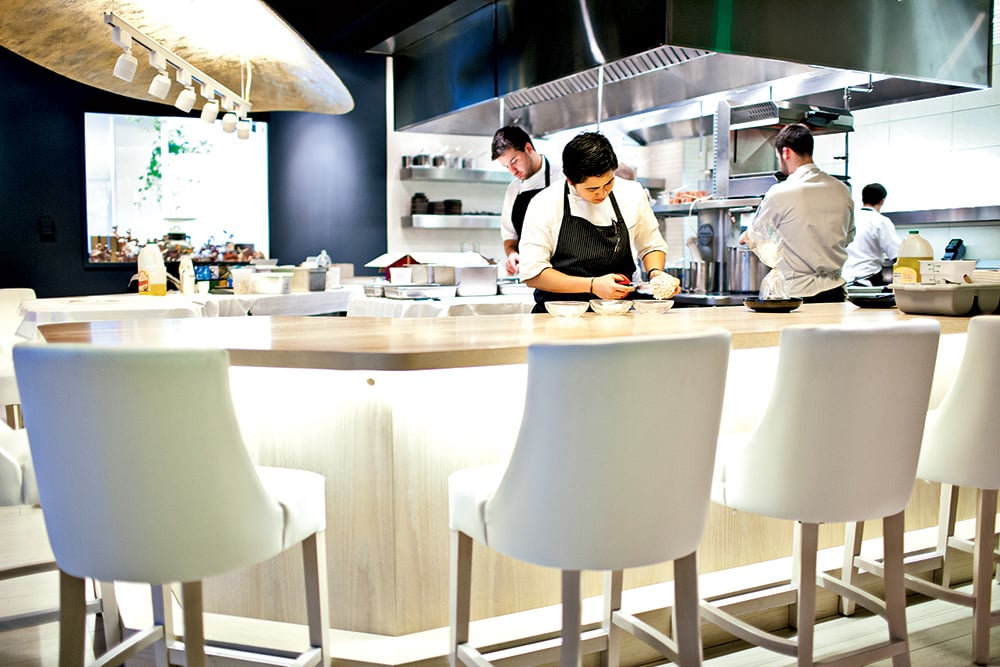About Minibar
Slideshow: Inside Minibar
How much has Minibar improved since it reopened in a new Penn
Quarter location late last year? This much: When I’d finished the last of
28 courses and walked out sated but not stuffed, the question I was left
asking was not “Who does José Andrés think he is, charging $225 a person
for dinner?” It was the question the restaurant itself not-so-implicitly
poses: Is it art?
Many chefs present themselves as artists, copping the aesthetic
of the gallery or museum to lend their restaurants gravitas: spare
setting, sacramental quiet, portentous explications of the works on view.
But are these chefs making art—that is, challenging our assumptions,
altering the way we look at things—or are they creating something merely
artful, pushing within the confines of the known to bring us beauty on the
plate?
I don’t take anything away from a chef—who is also a
businessperson—for choosing artfulness over art. We don’t go out to
dinner, after all, to question ourselves, unless it’s to dither over
whether it’ll be the duck or the lamb. There’s a reason the phrase
“comfort food” is so beloved—it speaks to the soulful embrace many of us
seek in these homes away from home.
This is why Minibar is so endlessly fascinating, and why its
eye-popping cost isn’t what ultimately defines it.
What does? That it puts its creator’s idiosyncratic desires
above the customer’s needs. That it delivers not so much a purely culinary
experience as a purely aesthetic one. That it dares to tempt the public’s
ire with its blithe dismissal of conventional expectation. Not even Damien
Hirst pushes more buttons with his in-your-face installations.
Of all the top meals in town, Minibar’s is the most hubristic
(the $225-per-person charge doesn’t include the beverage “packages” that
start at $45 and go up to $200), the most presumptive (you don’t call to
make a reservation—you e-mail until you’re chosen), and the most
control-freak in its methods (nearly every dish is accompanied by
instructions on how to eat it).
It’s also the most inventive, the most exacting, and the most
playful.
In fact, once you’re caught up in its seamless orchestration,
it’s easy to lose sight of what Andrés is doing. This is Minibar’s
triumph, that a radical attack should be presented as a high-wire circus
act.
In its previous incarnation, Minibar accommodated 12 people a
night on six stools inside the now-defunct Café Atlántico. Since relocated
to the former home of Zola Wine & Kitchen, the restaurant serves 24
people a night on 12 stools. Given the price and the limited seating, it
would be easy to accuse Andrés of fostering an air of exclusivity, but
foremost in his mind was to create a sense of immediacy and
intimacy.
You sit at a curved bar that looks onto a kitchen of three
cooks (with five more working behind the scenes), present at the creation,
as the flamboyantly grandiose Andrés might have it. Unlike many chefs who
try to handle their ingredients as little as possible, Andrés—like his
Spanish brethren Ferran Adrià and Juan Mari Arzak—loves to see what
strange new diamonds might be produced by subjecting a common ingredient
to atypical applications of heat, cold, or pressure—hence the battery of
implements that owe more to a lab than to a kitchen: liquid-nitrogen bath,
smoke guns, and heat sealers. One night, I watched a cook cycle through 12
different procedures over 25 minutes for a dish of two bites.
It almost goes without saying that a meal like this is not for
everybody. But Minibar is even more not for everybody than such four-star
destinations as the Inn at Little Washington and Komi, where the goal is
to ease you into the soothing bath of a great and sumptuous
meal.
If the conventional good restaurant is a showcase of dishes,
Minibar is a parade of flavors. French Laundry chef Thomas Keller has said
that a dish ceases to be interesting after three or four bites, and
throughout the beginning of the night Andrés seldom even grants you that
many.
The first several courses pose a fanciful question: What if
Andrés had commandeered a Lay’s snack factory? A cigar-like roll that
combined the layering of baklava with the lightness of crisped rice was so
insubstantial, it was like eating sculpted air. But it crunched like a
Dorito, and its flavors of shiso, sesame, and pine nut lingered like a
complex curry. Then came a candied-walnut shell spilling cream that tasted
more strongly of walnut than a walnut—a Whitman’s sampler by way of the
haute Parisian confectioner Ladurée.
This is a favorite trope of Andrés’s and recurs throughout the
meal, nowhere as virtuosically as in a carrot dish that arrives midway
through. There are no carrots; the gel-like orange dabs on the plate
resemble baby food. But the taste! It’s like an idealized form of carrot,
more intense than even an extract or liqueur. Likewise, the mango that
accompanies coconut sticky rice isn’t mango; it’s a sorbet held together
with a starch from the rice. Why go to such lengths to make mango when you
could simply serve the fruit? Because, Andrés might answer, his engineered
mango tastes stronger and more pure.
It’s a middle finger to the local, seasonal aesthetic that
prevails in today’s food world. One of the 11 locally sourced items on the
menu is the snipped branch of a pine tree, for a snow-inspired dessert—and
it’s not meant to be eaten.
For many chefs, dining at the highest level is a retreat into
pampering luxury. For Andrés, it’s principally an invitation to enter The
Mind of Andrés. Many courses are little more than delivery systems for an
idea, like a study in temperature (the hot/cold of his mezcal-flavored
snowball) or an exploration of textures (a voluptuously rich pig-tail
curry sandwiched between two meringues). Meat might be the primary
component in most French cooking, but the Spaniard Andrés often relegates
it to the margins (a take on shawarma features chicken skin, not
chicken; a churro is filled not with beef but with its gelatinous
tendon).
Initially, I admired the showy ingenuity more often than I
enjoyed it. But courses have been tweaked and sometimes overhauled. The
compositions have become tighter, the cooking more exacting. And there are
a handful of new dishes—including a grilled lobster tail and luscious
squab breast that turn up in the final movement—giving the meal a
substantiality it lacked on my prior visit. An intensely cerebral exercise
is now also a feast for the senses.
Take a variation on risotto with truffles, a dish that
initially looks like little more than a clever inversion, with mushrooms
subbing for rice. A tiny, clear plastic bag is placed before you and
snipped with scissors, sending up an aroma of such richness, it hardly
seems possible it was derived without meat. Beech-mushroom caps, tiny as
pearls, float atop a dark pool of beech-mushroom broth. Now a generous
amount of black truffle is shaved, the warmth of the broth releasing that
musky perfume. You eat this dish of uncommon intimacy with a small spoon,
slurping its rich, jus-like cooking liquid. It’s impossible to go
fast even if you want to.
Like so much else at Minibar, you’re compelled at the start to
study it. You end up simply submitting to it.
This article appears in the May 2013 issue of The Washingtonian.

